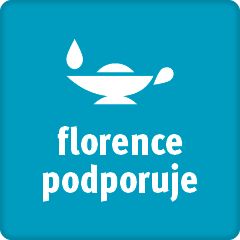


Lekce angličtiny
-
Nappy Rash

Nappy or diaper rash is a common name for a series of infant dermatitis symptoms. They appear most often in infants, but can persist even in toddlers. Infant nappy rash is an umbrella term for the following skin conditions: intertrigo, napkin dermatitis, infant atopic eczema and contact eczema.
-
Child Nutrition

Children should not eat too much, but at the same time, they should not starve. The recommended frequency is five to six meals a day and the size of the portions should correspond to the child's growth, weight and physical activity. While preparing food, parents should opt for quality vegetable oils rather than animal fats. They should also teach their children about moderate consumption of sugar, sweets and sweetened drinks. The main source of sugar for children should be cereals, fruit and vegetables. Correct fluid intake is also important – the recommended daily water intake is 1.5 to 2 litres.
-
Cleaning children's teeth

You should start brushing your children's teeth as soon as the first milk tooth breaks through, usually at around eight months. It is recommended that you use a very soft toothbrush or a piece of damp gauze, which delicately cleans the tooth surface. The teeth should be cleaned every day in the evening after the last drink or food. When the first molar tooth appears, it is necessary to start using a toothbrush, as gauze is no longer enough to clean the surface of a molar. It is ideal to start using a toothbrush and toothpaste to clean the child's teeth at around the age of two.
-
Decubitus ulcers

Decubitus ulcers, or pressure ulcers, are a common, yet serious condition associated with healthcare, most often occurring in the elderly. The ulcers are associated with soreness, mutilation, protracted healing, as well as with limitation of daily activities (problems with self care and immobility). Decubitus ulcers are very often directly connected to an increasing length of hospitalisation and potential mortality in the healthcare facilities, both emergency and after-treatment. The incidence varies with respect to the type of healthcare provided.
-
Pacemaker

An artificial pacemaker is a device used to treat disorders of the rhythm of the heartbeat known as bradycardia (heartbeat is too slow). In such situations, the heart may not be able to pump blood sufficiently with respect to the needs of the body, which results in a series of consequences.
-
Gestational Diabetes

Gestational diabetes mellitus affects as much as 17% of pregnant women, depending on diagnostic criteria. It is usually detected at blood screening, which is routinely done between weeks 24 and 28 of pregnancy. It affects women with hereditary predisposition, and the factor that triggers the onset of diabetes is an increasing level of pregnancy hormones and other substances during pregnancy.
-
Basal Stimulation

Basal stimulation provides the patients with clear, targeted information (stimuli) regarding themselves or their surroundings, which is considered elementary (basal) for them. Basal stimulation is a concept that has gained recognition in many European countries and is used in education and nursing care.
-
Dietary Guidelines for Ostomy Patients

An ostomy patient is in touch with a stoma care nurse who introduces him or her to the care of the ostomy and how to change the equipment. The stoma care nurse and the attending doctor provide the patient with general information regarding stoma care.
-
Hormonal contraception

Hormonal contraception prevents ovulation and conception. It is available in a variety of forms, such as tablets taken orally, subcutaneous implants, injections, patches, intrauterine devices (coils) or vaginal rings. There are two types of contraception for oral use – combined oral contraceptives and progestogen-only pills.
-
Parkinson's disease

Parkinson's disease is a neurodegenerative condition that affects the central nervous system and is directly associated with loss of nerve cells in part of the brain called the Substantia nigra. Under normal conditions, the cells produce dopamine, which is a neurotransmitter enabling the transmission of signals between nerve cells. A lack of dopamine leads to a patient's gradual inability to control and regulate movement.











